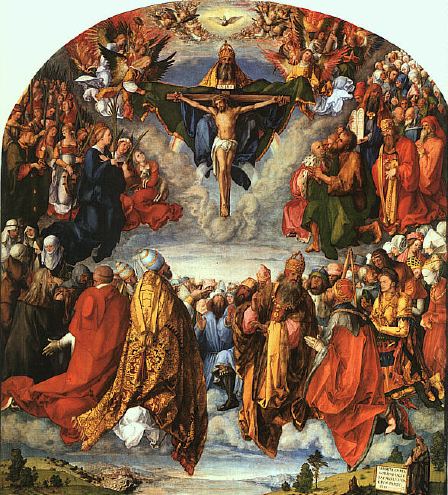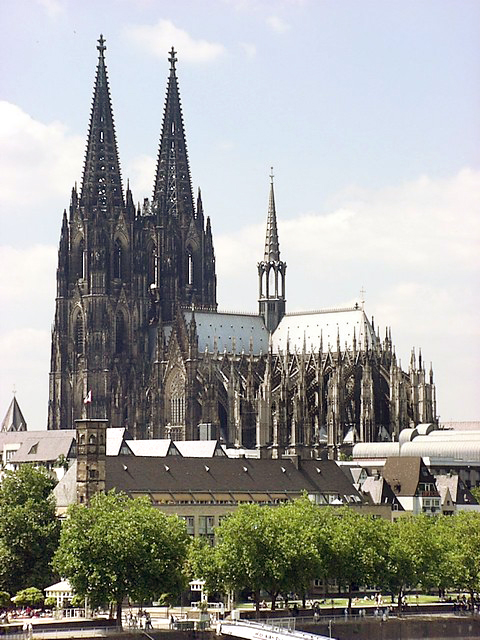My forthcoming Medieval Wisdom for Modern Protestants will draw on a group of 20th-century British Christian imaginative writers who also happened to be scholars of the Middle Ages. G K Chesterton, C S Lewis, Charles Williams, J R R Tolkien, and Dorothy L Sayers faced the many tentacles of modernity with a sense of alarm deepening into cultural embattlement. And they sought in medieval faith and culture antidotes to modern malaises.
(A clarifying note: I use the term “Inklings” of this group, recognizing that this is a loose usage. “The Inklings” is the name adopted by the group of writers who met in C S Lewis’s rooms at Oxford to read aloud their works to each other and engage in stimulating discussions and debates. I have stretched the group to include Chesterton, who pre-dated them, and Sayers, who was a friend of Lewis’s but never attended a meeting of the all-male group. All shared Christian faith and profound similarities in cultural and literary outlook, though the group certainly represented a wide variety of opinion on any number of important topics.)
A couple of years ago, as I prepared to teach a new course titled Medieval Wisdom for Modern Ministry at Bethel, I sketched out one of those “mind maps”–a diagram with a single organizing concept at the center, surrounded by connecting lines and circles containing related concepts. The central concept was “Anti-modernism among the Inklings.” Here are the surrounding circles, in no particular order:
Humane economics and a holistic theological anthropology vs. utilitarianism and materialism; e.g. Sayers’s writings on vocation (vs. “homo economicus”) in Begin Here and essays such as “Why work?” Lewis’s Abolition of Man
A sacramental view of the world vs. urban blight and the industrial rape of the land; e.g. Lewis’s Discarded Image, Williams’s Affirmative Way, Tolkien’s sacred landscapes (e.g. Lothlorien, Rivendell, Tom Bombadil & the ents)
Moral human relationships vs. modern permissiveness, decadence, and moral relativism; e.g. Lewis’s Abolition of Man, Mere Christianity, and Screwtape Letters, Sayers’s “The other six deadly sins,” the Inklings’ affection for Dante and for medieval notions of chivalry
Communal memory vs. modern amnesia; e.g. Lewis’s Cambridge address (De descriptione temporum), Tolkien’s rich mythos with its oral tradition of stories and songs, Tolkien’s and Sayers’s translations of key medieval texts
The beauty of God’s creation vs. the ugliness of modern factories and cities; e.g. Chesterton’s and Tolkien’s artistic training and sensibilities, Tolkien’s elvishness (craftsmanship as precious heritage) vs. the industrial complex of Mordor, the romanticism latent in all the Inklings’ writings
The recovery of local loyalties vs. modern totalitarianism and pasteurized world culture; e.g. Chesterton’s “What I saw in America,” Napoleon of Notting Hill, and medieval guild-based economic idealism, Tolkien’s medieval kings and races
The recovery of God vs. modern philosophical materialism; e.g. Chesterton’s Orthodoxy, Lewis’s The Silver Chair (the dialogue with the witch) and his Space Trilogy, Sayers’s apologetic essays and “Creed of St. Euthanasia”
The recovery of the church as narrative community vs. the emptiness of modernist theology; e.g. Chesterton’s Francis of Assisi, Sayers’s “The Dogma is the Drama” and Emperor Constantine and her other plays
The recovery of the suffering human/divine Jesus Christ vs. the distant Christ of modern philosophy and sentimentalized churchiness; e.g. Lewis’s The Lion, the Witch, and the Wardrobe, Sayers’s “Man Born To Be King”
The Inklings’ antimodernism had other aspects, but that’s a beginning. It’s impossible to look at their medievalism without looking at their antimodernism. The two went together.


 Medieval Wisdom for Modern Christians
Medieval Wisdom for Modern Christians






